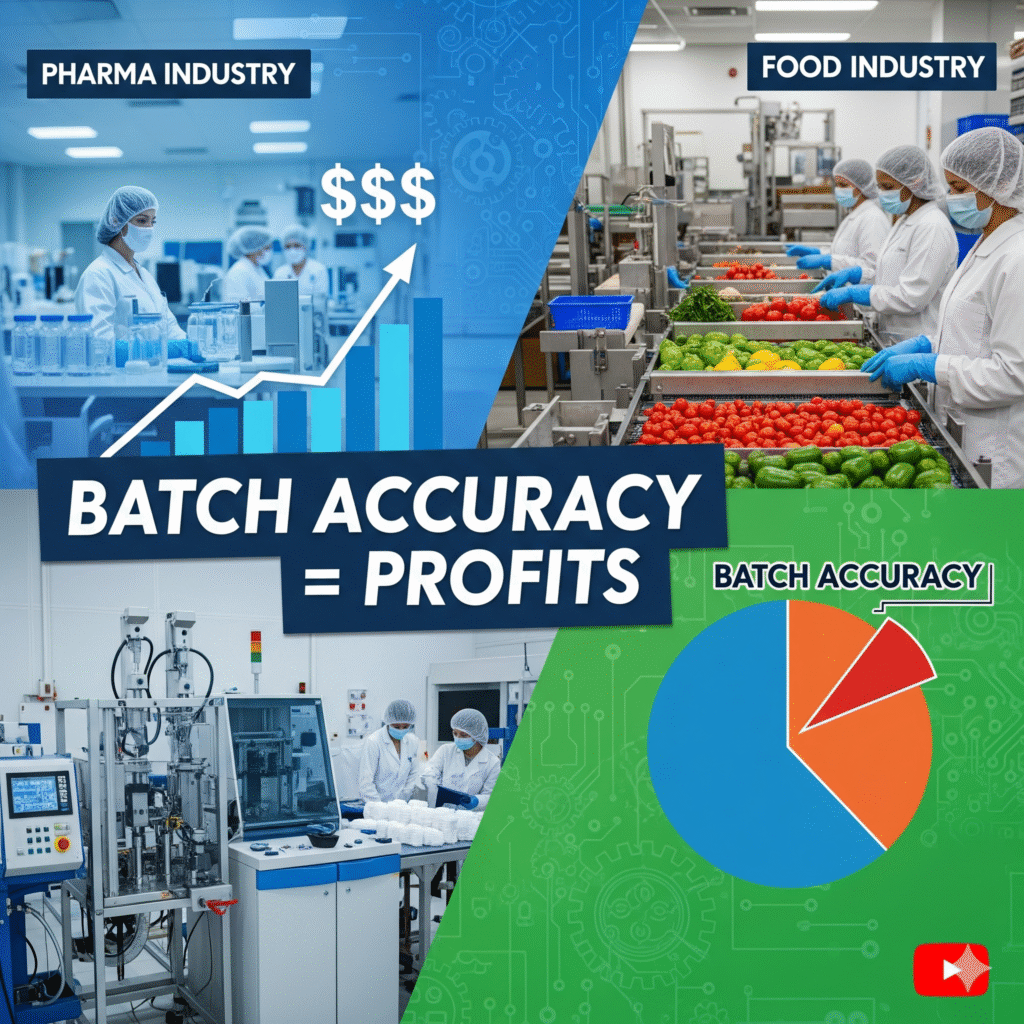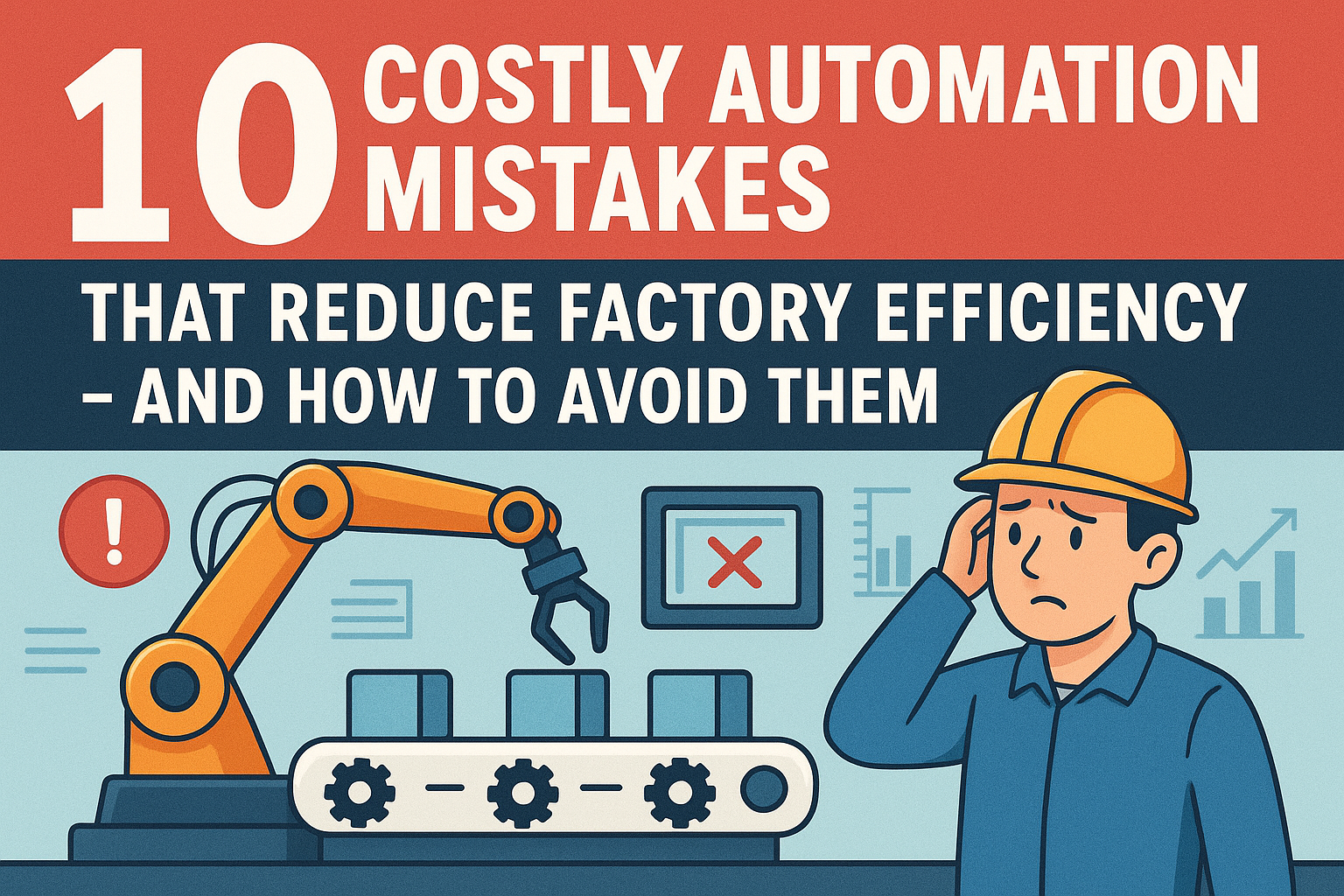
Understanding the True Value of Batch Accuracy
In today’s highly competitive pharmaceutical and food sectors, the difference between profit and loss often boils down to how precisely batches are produced. Batch accuracy refers to the exact adherence to a predefined recipe or formula for each batch of product — whether it is a pill, syrup, snack, or beverage.
Inaccuracies can lead to regulatory non-compliance, product recalls, waste, customer dissatisfaction, and ultimately, financial losses. Conversely, achieving high batch accuracy results in better product quality, regulatory adherence, cost-efficiency, and increased profitability.
This guide explores why batch accuracy is indispensable, the challenges faced, technologies used, and how it translates into higher profits.
Batch accuracy means:
- Exact measurement of ingredients (quantity, quality, order)
- Consistent process parameters (temperature, mixing time, humidity)
- Uniformity in the final product (texture, potency, taste)
- Documentation and traceability for every batch
It is not just about weighing; it includes every step from raw material handling to packaging.
Regulatory Landscape and Compliance Pressures
The pharma and food industries are heavily regulated. Authorities like FDA, EMA, WHO, and local food safety agencies mandate:
- Precise batch documentation
- Strict adherence to formulations and procedures
- Traceability of every ingredient and batch
- Regular audits and inspections
Failure to comply leads to:
- Heavy fines
- Forced recalls
- Production shutdowns
- Brand damage
Batch accuracy is key to passing audits and maintaining license to operate.
Financial Impact: Cost of Inaccuracy
- Material Waste: Overuse or underuse of ingredients leads to raw material wastage or inferior product quality.
- Rework & Scrap: Inaccurate batches mean costly reprocessing or disposal.
- Downtime: Identifying and correcting batch issues cause production halts.
- Inventory Challenges: Poor batch accuracy disrupts inventory planning causing stockouts or excesses.
These factors inflate operational costs and shrink profit margins.
Quality Assurance and Customer Expectations
Customers in pharma and food sectors demand:
- Consistent efficacy in medicines
- Uniform taste and texture in food products
- Safety and shelf stability
Inconsistent batches lead to consumer complaints, loss of trust, and brand erosion.
Supply Chain and Inventory Optimization
Accurate batch data enables:
- Just-in-time procurement
- Reduced inventory carrying costs
- Better supplier coordination
- Lower storage and spoilage losses
This streamlines operations and cuts unnecessary expenses.
Reduced Risk of Product Recalls
Recalls can cost millions directly and indirectly. Precise batch control ensures:
- Each batch meets quality specs
- Quick identification and isolation of issues
- Minimized scope of recalls
Enhanced Operational Efficiency
Batch accuracy reduces:
- Errors during production
- Need for manual inspections
- Frequency of quality control failures
Leading to faster production cycles and reduced labor costs.
Optimized Use of Expensive Ingredients
Many pharma ingredients and specialty food additives are costly and sensitive. Accurate batching prevents:
- Overdosing (waste)
- Underdosing (subpar product performance)
Faster Regulatory Approvals and Market Entry
Accurate batch records facilitate smoother regulatory submissions and audits, accelerating product launch times.
Human Error and Manual Processes
Manual weighing and recording are prone to mistakes and inconsistencies.
Variability in Raw Materials
Natural ingredients, especially in food, can vary batch to batch, requiring constant adjustment.
Equipment Limitations
Outdated or poorly maintained equipment leads to inaccurate measurements and process controls.
Complex Formulations
Pharma products often have multiple ingredients with tight tolerances, demanding advanced control.
Automated Weighing and Dispensing Systems
- Use of high-precision load cells and scales
- Integration with software for real-time feedback
- Automatic ingredient dispensing with recipe control
Batch Management Software (BMS) and MES (Manufacturing Execution Systems)
- Digitally records batch data
- Controls production steps and alerts for deviations
- Ensures compliance with audit trails
Advanced Mixing and Homogenization Equipment
- Ensures uniform ingredient distribution
- Controls parameters like shear rate and temperature
IoT Sensors and Real-Time Monitoring
- Continuous monitoring of environmental conditions
- Instant alerts on deviations to prevent batch failures
AI and Machine Learning in Batch Optimization
- Predicts optimal process parameters based on historical data
- Enables adaptive control to compensate raw material variability
Pharmaceutical Industry
- Ensures dosage accuracy critical for efficacy and patient safety
- Complies with cGMP and FDA regulations reducing risk of sanctions
- Facilitates serialization and traceability for anti-counterfeiting
Food Industry
- Maintains taste and texture consistency vital for brand loyalty
- Reduces allergen contamination risks through precise segregation and cleaning
- Supports shelf-life optimization by consistent formulation
Case Study 1: Pharma Company Reduces Recall Costs
By integrating automated weighing with batch software, a pharma manufacturer:
- Reduced batch deviations by 40%
- Saved over $1 million annually in recall avoidance
- Cut batch release time by 20%
Case Study 2: Food Manufacturer Boosts Profit Margins
A snack producer implemented IoT-based batch monitoring, resulting in:
- 15% reduction in ingredient waste
- Improved product consistency led to 10% higher repeat sales
Reduced quality control labor by 30%
Step 1: Assess Current Batch Process
- Identify error-prone steps
- Evaluate equipment precision
- Audit compliance gaps
Step 2: Invest in Technology
- Automated weighing and dispensing
- Integrated batch management software
- Real-time monitoring sensors
Step 3: Train Staff Thoroughly
- On equipment use
- Data entry accuracy
- Understanding importance of batch accuracy
Step 4: Continuous Monitoring and Improvement
- Use data analytics for process optimization
- Regularly calibrate and maintain equipment
- Implement feedback loops for quality control
- Accuracy and Precision: Look for systems with tight measurement tolerances
- Integration Capabilities: Compatible with existing MES and ERP systems
- User-Friendly Interface: For easy adoption and training
- Compliance Features: Support for electronic records and audit trails
- Scalability: Solutions that grow with your production needs
- Service and Support: Reliable vendor assistance and maintenance
Q1: How does batch accuracy impact regulatory audits?
A1: Accurate batch records and processes ensure smoother audits and reduce the risk of penalties.
Q2: Is manual batching completely obsolete?
A2: While manual batching still exists, automation significantly reduces errors and improves consistency.
Q3: What industries beyond pharma and food benefit from batch accuracy?
A3: Cosmetics, chemicals, and specialty materials industries also gain from accurate batching.
Achieving high batch accuracy is not just a technical goal — it’s a strategic business decision that boosts your profitability, compliance, and customer satisfaction.
Ready to revolutionize your batch production?
- Contact our experts today for a Free Batch Accuracy Audit
- Explore cutting-edge solutions customized for your industry
- Request a demo and see how automation can transform your production line
- Get Your Free Consultation Now
Batch accuracy is the cornerstone of operational excellence in pharma and food manufacturing. Investing in precise, automated, and monitored batch production systems:
- Minimizes waste and recalls
- Improves product quality and consistency
- Enhances regulatory compliance
- Drives significant cost savings
- Increases customer loyalty and market share
Make batch accuracy your competitive advantage and watch your profits soar.


